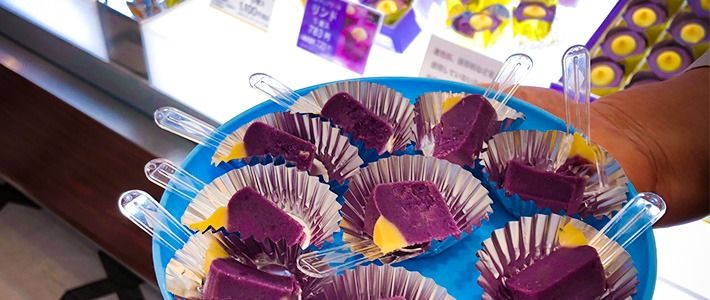
“Depachika”: Japan’s Basement-Level Food Markets
Culture- English
- 日本語
- 简体字
- 繁體字
- Français
- Español
- العربية
- Русский
A World of Edible Delights
The underground levels of Japanese department stores are commonly home to food markets known as depachika, a name that comes from depāto (department store) and chika (basement). These markets are packed with products to cover all shoppers’ dining needs. Shoppers can browse a wide range of dedicated stalls offering high grade Japanese tea, sweets from established confectioners, fresh meat and fish, high-end fruit, and even imported cheese and wine. There is also ready-to-eat fare like bentō meals, ethnic dishes, bakery-fresh bread, and deli items.
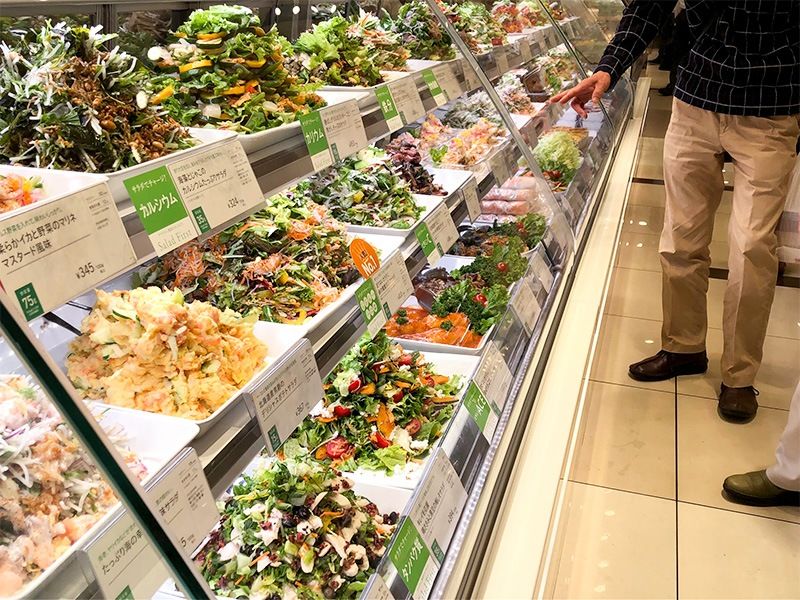 A selection of salads in a shop display case.
A selection of salads in a shop display case.
Along with their broad selection, the convenient location of depachika directly below the main floor of a department store adds to their appeal. Customers who have been shopping on the upper levels can easily drop by to pick up a few items before heading home. Some shops are even directly connected by underground passages to train and subway stations or public parking facilities, making them attractive to busy commuters or shoppers looking to avoid carrying their purchases through rain or hot weather on their way home.
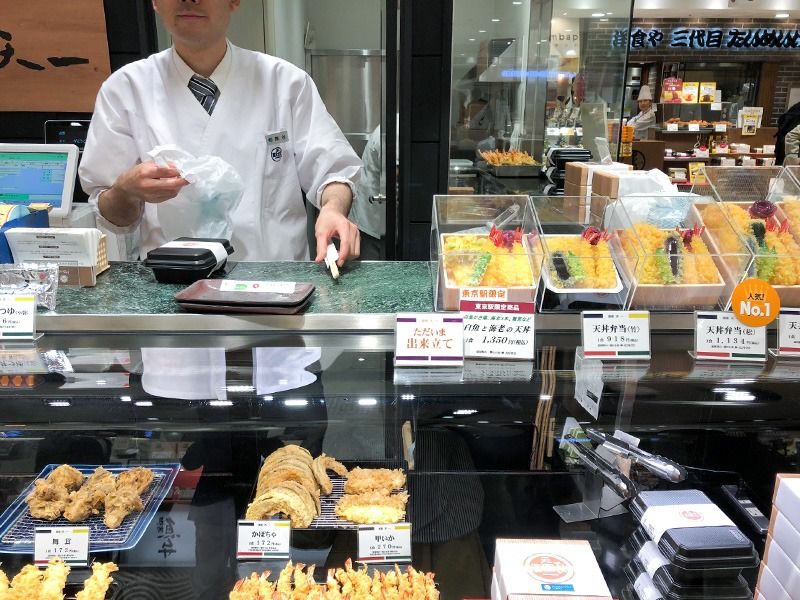 A tempura shop offers bentō servings as well as individual pieces.
A tempura shop offers bentō servings as well as individual pieces.
Logistics is another factor in markets’ underground locale. It is easier and less expensive to run the numerous gas and water lines needed by shops and to install vital refrigeration facilities in the basement levels of a department store. With kitchen areas nearby, staff can also quickly transfer items to display cases and convey deliveries from underground loading docks.
Although underground food markets tend to be pricier than standard supermarkets, they have continued to attract customers with the quality and selection of their items and account for a growing share of department store sales. This has produced fierce competition as stores try to stand apart by offering tailored services and a greater variety of products.
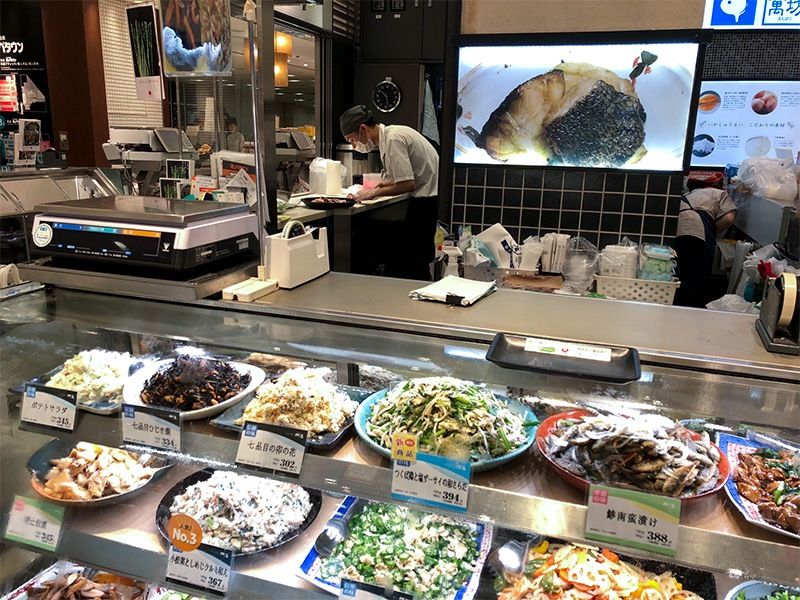 A deli offers a variety of side dishes.
A deli offers a variety of side dishes.
Changing with the Times
The department store chain Matsuzakaya opened the first basement market in 1936 at its flagship store in Nagoya. Other retail outlets around Japan followed suit, and the shopping areas grew to become standard features of department stores. However, it was only in 2000 that depachika, as they came to be known in the late 1990s, began to garner broad attention, after the Tōkyū Department Store in Shibuya unveiled its renovated food floor. Looking to update the image of its underground market, the retailer departed from the traditional image of a department store basement as a place primarily to buy high-end gift items, introducing widely attractive products and services that struck a chord with consumers.
Since then depachika have evolved in tandem with the changing lifestyles of an increasingly diverse clientele that includes working mothers, singles, and older shoppers. As people have less time in their schedules for shopping, the wide selection of premade and specialty foods and the ability to purchase quantities that suit individual needs have helped draw customers to basement food markets. The depachika model has even spread beyond department stores to include shopping complexes inside train stations.
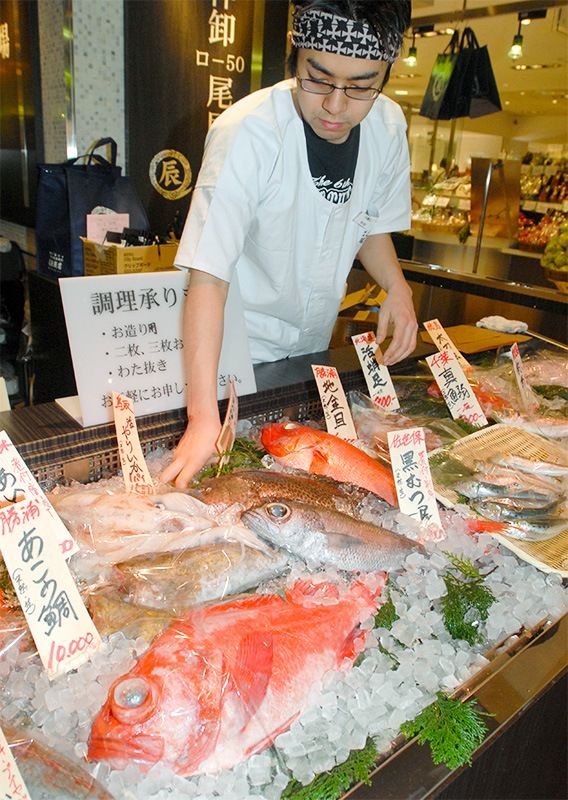 Fresh fish on sale at the Seibu Department Store in Shibuya, Tokyo. (© Jiji)
Fresh fish on sale at the Seibu Department Store in Shibuya, Tokyo. (© Jiji)
A Glimpse into Japanese Tastes
Visitors to Japan looking for popular items or a one-of-a-kind souvenir should definitely walk the aisles of a depachika before returning home. Many well-known Japanese and overseas brands have stalls stocked with perennial favorites, alongside seasonal and specialty items that are not widely available. Most shops also offer samples to customers, providing a chance to try out the latest flavors of chocolates, cakes, and other goodies.
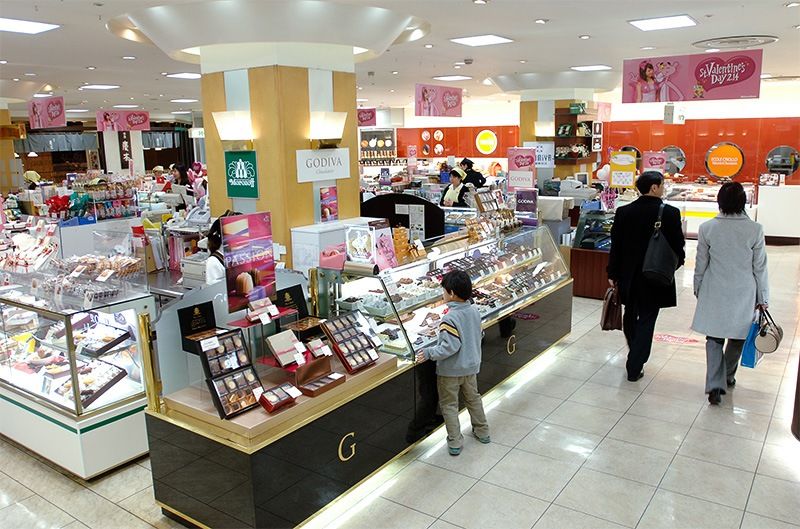 Stalls selling brand-name sweets line the aisles of the depachika at Matsuzakaya in Ginza, Tokyo. (© Jiji)
Stalls selling brand-name sweets line the aisles of the depachika at Matsuzakaya in Ginza, Tokyo. (© Jiji)
The fastidious Japanese palate is known for driving new food trends, and depachika are where many crazes first take flight. From famed sweets to local gourmet dishes, Japan’s department store basement markets are microcosms of what the Japanese like to eat.
Top Depachika in Tokyo
Daimaru Tokyo : Located just next to Tokyo Station’s northeast side, this department store’s depachika offers a wide variety of bentō and other foods. It also boasts around 50 stalls for brand-name confectioners.
Takashimaya Nihonbashi : Shoppers at this historic building can buy a bentō on the basement floor, ride the elevator staffed by white-gloved attendants to the top, and enjoy it in the roof-top garden.
Isetan Shinjuku : One of the most prestigious department stores on the west side of central Tokyo, Isetan boasts a solid collection of high-end confectioners in its basement floor, directly accessible from the Shinjuku and Shinjuku Sanchōme subway stations. The carrot cake sold at Rose Bakery and the macaron cake available at Pierre Hermé Paris are particularly popular items.
Shibuya Tōkyū : This store is a short walk from the Hachikō statue in front of Shibuya station. The depachika features Bel Amer chocolates, fruit cakes from Takano, and ready-to-eat dishes popular among younger shoppers. The “This Week” area of the sales floor features the hottest shops, switched out for new ones every seven days.
Mitsukoshi Ginza: Features an extensive depachika for shoppers in Tokyo’s most exclusive retail district. Department store fans can head north to Matsuya or south to Ginza Six for more depachika fun.
(Banner photo: A shop attendant hands out purple sweet potato samples to passing customers.)